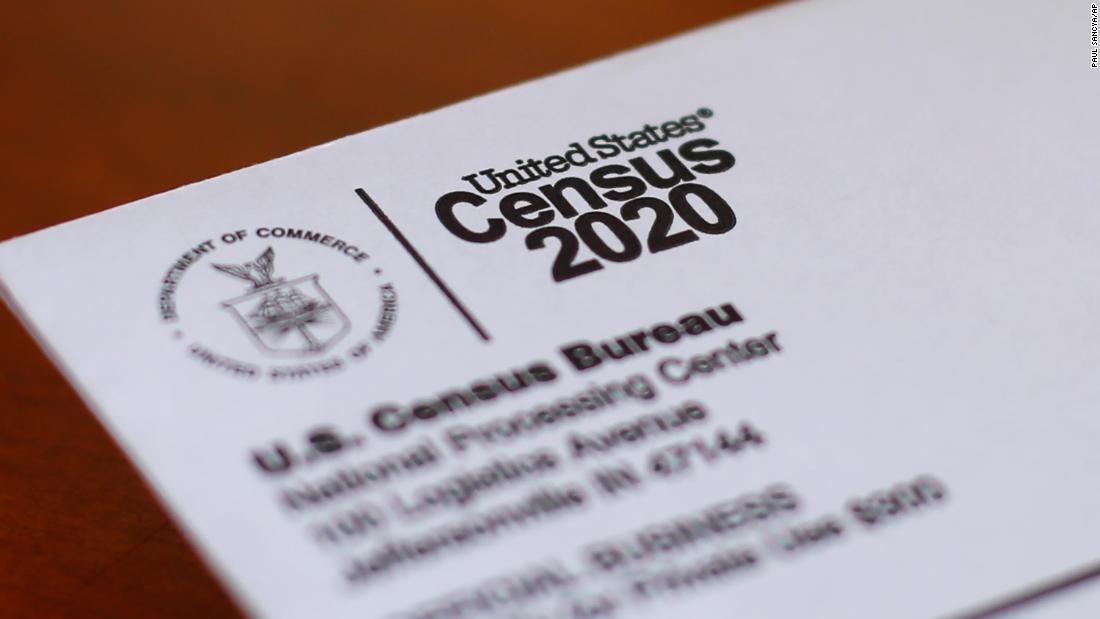Top 5 Most Populous Cities in the U.S. 1:00
Editor's Note:
Justin Gest (@_JustinGest) is an Associate Professor in the School of Politics and Government at George Mason University.
He is the author of "The New Minority: White Working Class Politics in an Age of Immigration and Inequality" and will publish a new book, "Majority Minority" next year.
The opinions expressed in this comment are yours.
See more CNNEE views here.
(CNN) -
The 2020 census figures released Thursday tell the story of a rapidly changing country: The relative size of the nation's white population continues to decline, while ethnic and racial minorities represent the sole source of growth. of the population.
At first glance, these numbers suggest a bleak future for the Republican Party, which finds its strongest support among whites.
However, the surprising reality is that, in general, these demographic trends may favor the Republican Party because of the way in which political power is distributed in the United States.
The rise of ethnic and / or racial minorities has long been thought to favor the Democratic Party, which has largely appealed to diverse urban groups and prioritized racial equity.
By contrast, the Republican Party, under the leadership of former President Donald Trump, has embraced a policy of nativism and nostalgia, capitalizing on white Americans' fear of the country's changing demographics.
OPINION |
What the United States would be like with zero immigration
At first glance, the 2020 Census count offers demographic evidence for those conservative social anxieties.
The country is steadily advancing toward the long-awaited milestone of the "majority minority," when the number of non-white Americans outnumbers those who identify as white.
Estimates suggest that Americans under the age of 18 are already a majority minority, while more than three-quarters of those over 65 are white.
The proportion of white Americans, right now the main Republican electorate, is declining thanks to a combination of lower immigration from Europe, lower fertility rates and lower life expectancy attributable to drug overdoses and suicides.
However, there are three demographic and political trends that counteract the effect of the country's diversification.
1) We are witnessing a constant displacement of the population, and therefore of the exercise of power, towards the south and west of the country, regions controlled mainly by the Republicans.
In the past 50 years, the proportion of the American population living in the southern and western states increased from 48% to 62%.
And of the 10 states experiencing the highest population growth since 2010: Utah, Idaho, Texas, North Dakota, Nevada, Colorado, Washington, Florida, Arizona, and South Carolina;
only Washington is a solidly Democratic state, although Colorado tends in that direction.
Meanwhile, California, Illinois, Michigan, New York, Ohio, Pennsylvania and West Virginia, which have experienced population losses in the past decade, will each lose one seat from their congressional delegations.
Of these, only West Virginia votes traditionally Republican.
On the other hand, Colorado, Florida, Montana, North Carolina and Oregon will win one seat each, and Texas will win two.
Of these, only Oregon votes overwhelmingly for Democrats.
One counterargument is that the influx of Northeastern, Midwestern, and / or minority Americans into these more Republican regions may offset the Conservatives' previous lead, as happened in Georgia.
However, a second trend complicates this possibility.
OPINION |
I'm a journalist, and the Trump administration secretly tried to obtain tens of thousands of my emails
2) Partisan gerrymandering, that is, the manipulation of constituencies, is profoundly effective in mitigating the effect of demographic change on the legislative careers of the House of Representatives and the states.
With the release of the census results, states will redraw their congressional and legislative boundaries.
When this process is in the hands of state chambers controlled by Democrats or Republicans, parties use sophisticated mathematics to redistribute voters in a way that maximizes their chances of victory in the largest number of legislative districts.
For Republicans, this has historically meant consolidating many minority-American constituencies into as few districts as possible or scattering them across multiple districts.
The future of America's majority minorities is already reflected in a few super-diverse regions.
Majority minority counties are now home to one-third of all Americans, but comprise a small fraction of all counties in the United States, especially in the south and southwest of the country.
While these rallies may facilitate the election of some local leaders with ethnic minority backgrounds, they also make minority voters easier to isolate in the redistricting process.
In this current redistricting cycle, Republicans have a clear advantage: thanks to majorities in state legislatures and governorships, the Republican Party will have all the power to draw 38% of the congressional district lines, versus the 16% of Democrats.
This advantage will allow Republican-led redistricting commissions in diversifying states like Texas or Florida to absorb demographic change in ways that reduce the burden that might otherwise be associated with growing populations. minorities.
OPINION |
Joe Biden, the minority president
Still, some might believe that the number of minority Americans will exceed the ability of "gerrymandering" to dilute its power.
And, certainly, demographic change could alter the gubernatorial, senatorial, and other state elections in states like Texas.
But there is a third trend that is food for thought.
3) Although their share of the US population is growing, ethnic minority growth rates are slowing and immigration is declining.
The country's march toward a major minority milestone has been fueled by the arrival of large numbers of immigrants who settle in the United States and give birth to more children on average than native-born Americans.
But thanks to an outdated immigration system, increased border surveillance, and the global pandemic, immigration to the United States has slowed in the past decade, and the rise in ethnic minority populations has been attributed mostly to birth rate.
Among Hispanic Americans, about three-quarters of population growth in the past decade came from births in the US, and the remaining quarter from immigration.
The United States finds an unprecedented number of immigrants on the southern border, says Secretary of Homeland Security
Meanwhile, immigration reform has been stalled in Congress for more than three decades, and Republicans have made the reduction in annual flows a hallmark of their policies and platform since Trump's victory in 2016.
Many liberals believed that Republican politics would mobilize a new generation of minority voters. But despite Trump's inflammatory remarks and policies implicating ethnic and religious minorities, Republicans increased their share of minority voters nationwide in the 2020 election. So even though the ranks of voters with ethnic minority backgrounds grow, they could suddenly become less trustworthy in the Democrats.
Some social scientists also hope that more biracial and Hispanic Americans will self-identify as "white." And, in fact, the number of mixed-race Americans has nearly tripled since 2010. This will further weaken identity-based Democratic appeals and could reduce any penalties Republicans face for their nativism.
Taken as a whole, the 2020 census reveals trends that have conflicting political implications in the context of America's unique electoral institutions.
The diversification of the United States is unquestionable.
But as the American population is shifting into regions where the Republican Party remains in control, Republicans will be able to delay and minimize the political representation of ethnic minorities, at least until 2030.
Census Republican Party














